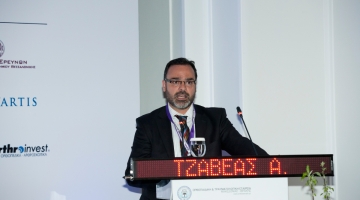Back pain
The back (lumbar region) is a complex structure based on the bones of the spine (vertebrae). The spinal column consists of 24 bones which are deposited on top of one another and joined together with the intervertebral discs in front and smaller joints at the back. The stability of the spine is based not only on the bony structures but also on the muscles and ligaments which surround them. The nerves of the spinal cord, connecting the brain to the rest of the body, are located in the spine in a central tube called vertebral tube. The sections of the nerves exiting the spinal canal and directed to different parts of the body are called nerve roots.
The back pain is part of everyday life. In most cases it is caused due to an awkward movement or a "pull", usually constituting a minor injury of a muscle or ligament. Most patients with back pain fall into this category, and symptoms improve in a few days.
Sometimes the pain is due to a herniated intervertebral disc in which a part of the disk located between two vertebrae pushes a delicate structure such as a nerve root. There are other, more rare causes of pain, such as inflammation, infection, fracture or tumor.
If the back pain is prolonged then additional events contribute to persistence. The muscles of the lumbar area become weak, physical activity decreases and the body is gradually obtaining a poor physical condition. This can affect patients’ work, social life and personal relationships. All these can lead to increased anxiety, depression and anger, particularly if the patient is not adequately managed by the family and the medical staff.
Practical advice
- Get rid of stress, most back pain episodes are cured
- Fewer than 1% of cases require surgical treatment
- Do not rest for long time, prolonged bed rest causes loss of muscle and bone mass
- Gradually increase your physical activities
- Do specific exercises for backache at least twice a day
- Start additional physical exercise
- Stop smoking
- If symptoms persist, see your doctor








